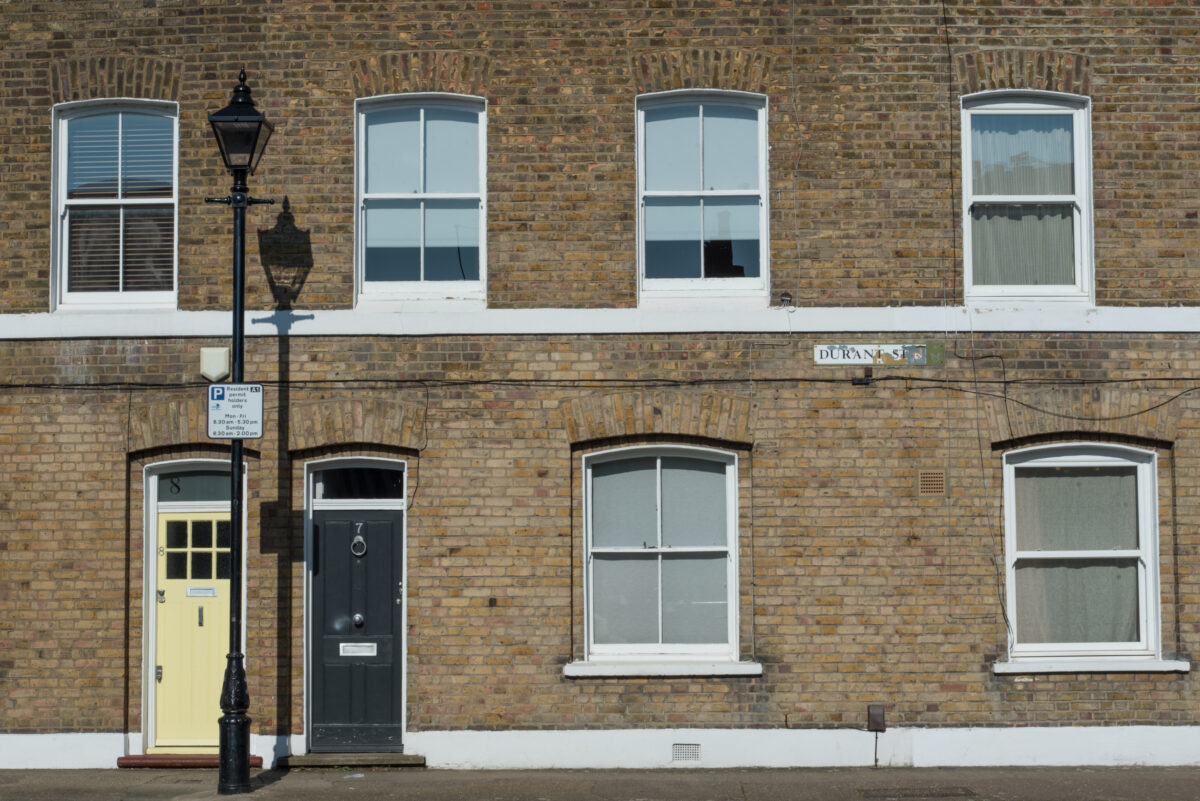We cannot borrow our way out of the housing crisis: mortgage credit is part of the problem
One of the key issues highlighted in my new book about ‘Generation Rent’ is how mortgage lending drives the UK housing crisis. I am far from the first person to point this out: my understanding of the problem is drawn from the research of the think tank Positive Money, IIPP economist Josh Ryan-Collins, property cycles expert Philip J Anderson, and many others.
But no-one in government seems to be taking it seriously. As a result, a dangerous policy proposal in the 2019 Conservative manifesto has gone largely unchallenged: the promise to support the mortgage industry in delivering long-term low fixed-rate mortgages for first-time buyers, which will ‘slash the cost of deposits’. This may sound like an enticing idea, but in practice it will only pour more petrol on the fire.
The truth about where mortgages come from
When you take out a mortgage, the lender conjures new money into existence. The money doesn’t come from other customers’ savings accounts, nor does it come from bank ‘reserves’: it is created from nothing.
The main constraint on mortgage eligibility is the borrower’s ability to repay the debt. Effectively, a mortgage is a large withdrawal from The Bank of Future You. And while you can typically only borrow 90%-95% of the property value, this does little to keep mortgage borrowing in check, as property prices can rise in response to expanding mortgage credit and vice versa.
When property and mortgages collide
When cheap and readily-available mortgage credit meets residential property, house prices shoot up. This is because the supply of land, which accounts for about 70% of the value of a home, is fixed. No market can produce new land in response to the demand for housing created by expanding mortgage credit. And you cannot take out a mortgage against a home that hasn’t been built yet.
So, what you get is an ever-expanding supply of money chasing after a finite amount of property. Maybe we should think of it this way: rather than house prices going up, the value of money itself has been systematically trashed relative to the value of property.
What if we pour new money into new homes instead?
This was the rationale behind the government’s Help to Buy Equity Loan scheme, which was reserved for new-builds only. The idea was that, because the new loans would be used to increase the housing supply, the scheme wouldn’t lead to house price inflation.
But since the scheme was rolled out via huge private housebuilders, these companies were able to control the supply of housing by hoovering up as much land as possible and drip-feeding their (often shoddy) new-builds onto the property market at a slow enough rate to keep sale prices artificially high. In consequence, housebuilders’ profits have swelled, and Which? recently reported a trend of Help to Buy homes falling in value, despite rising local house prices. Most worryingly of all, Help to Buy mortgage arrears are running at six times the ordinary rate.
A culture of land speculation entrenches the issue
Maybe the land-credit feedback cycle would be dampened if it were possible to take out a mortgage to fund a self-build property. But to acquire land, you normally have to satisfy a landowner’s price expectations (claiming vacant or unregistered land in this country is almost impossible). These expectations are likely to have been warped by the speculative nature of the land market.
Most landowners know that, under current rules, a piece of agricultural land can become around 92 times more valuable with a grant of planning permission for residential buildings. If the seller doesn’t like the price on offer, they can withhold their land indefinitely with no consequences.
A whole ‘land promotion’ side-industry has sprung up to enable speculators to share in the planning uplift, using legal mechanisms like ‘option agreements’ and ‘promotion agreements’ to reduce risk and increase profits. As a result, land is scarce and acquiring it is both costly and difficult, despite the fact that only around 6% of UK land mass is actually built on.
Why planning reform won’t solve the problem
Perhaps because land speculation is so rampant in Britain, the planning system is currently painted as the big bad wolf of the housing crisis amongst conservative thinkers. There is a belief that the land market will magically start behaving like any other free market if we scrap the 1947 Town and Country Planning Act. But for all its flaws, the planning system is not the fundamental issue here, even if there is a genuine case for planning reform.
In Victorian Britain, slum housing, rising rents and overcrowding plagued the Capital and other areas of rapid economic growth. This had nothing to do with rules and regulations (which were next to non-existent), and everything to do with the power that comes with land monopoly. The poor got poorer and the landed got richer: ‘twas ever thus.
We need to keep talking about land and credit
The only way to permanently stop the price of property ballooning out of all proportion is to tax the land beneath it. A land value tax could replace council tax (a ‘highly regressive’ policy that falls hardest on the least well-off), business rates and Stamp Duty Land Tax, and would disincentivise land speculation. It could raise much-needed revenue for public services hit by austerity cutbacks. Or it could even be redistributed in the form of a ‘citizen’s dividend’ or Universal Basic Income.
This idea has garnered support from across the political spectrum, but has traditionally been opposed by governments beholden to wealthy landowners and a predominantly homeowning public. So, since it may take some time to get the electorate to come round to the idea of a land value tax, a more urgent and politically possible course of action would be to reform the land acquisition process, so that local authorities can afford to build genuinely affordable social housing at scale.
In addition, the Right to Buy policy must be scrapped immediately to stem the loss of social housing – especially given that nearly half of the homes sold are ending up in the private rented sector and contributing to the soaring cost of housing benefit. The shortage of genuinely low-cost homes is acute; the number of people stuck on social housing waiting lists stands at well over 1 million.
For too long, spiralling house prices have been dismissed as an inevitable force of nature, or the product of too little housebuilding, or too much immigration – even though research from the Bank of England has concluded that the quadrupling of house prices over the last 40 years is ‘more than accounted for’ by falling interest rates. It may be dry, knotty and difficult to fit into a soundbite. But until we increase public understanding of the land and credit feedback cycle, the housing debate will only keep going around in circles.

